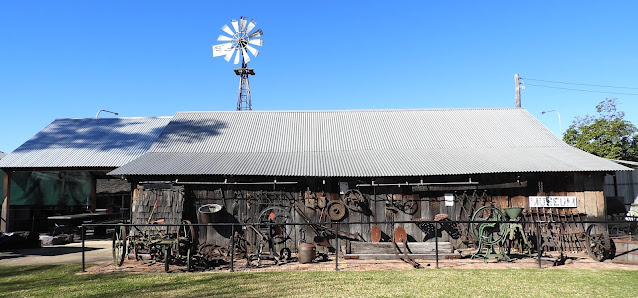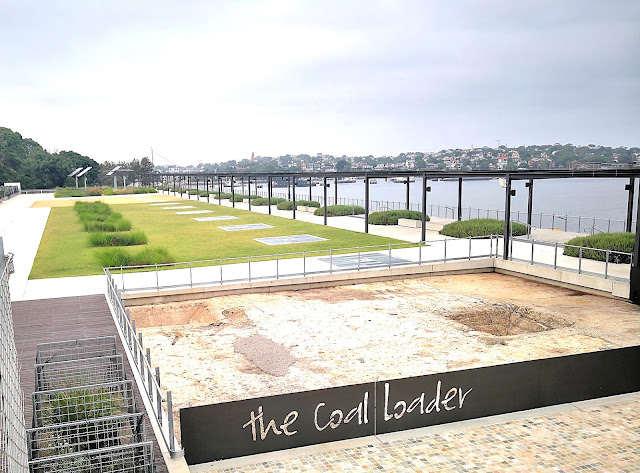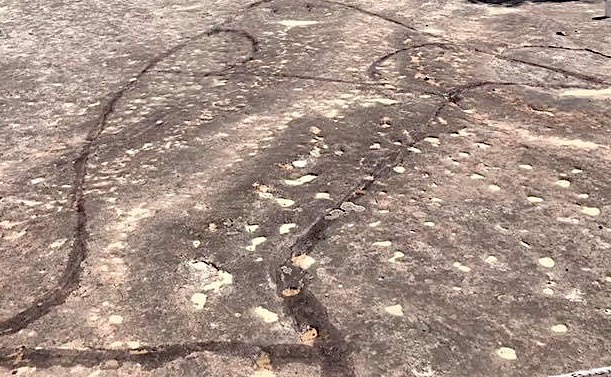The Arms of Australia Inn Museum, located on the Great Western Highway, Emu Plains, was built it two sections, the first in 1826.
The inn was once a staging post for travellers from Sydney going over the Blue Mountains to Bathurst and the goldfields.
The original building was part of Governor Macquarie’s Experimental Prison Farm, possibly the tanner's hut. The inn was probably licensed as the Mountaineer Inn in 1837 before being licensed as The Arms of Australia in 1841.
Businesses along the Great Western Road collapsed after a rail line opened to Bathurst in 1869.
The Arms of Australia was a ruin for years until it was saved from demolition and restored and officially opened on 27th March 1976 as a museum of local history.
The Inn is also the Headquarters of the NSW Corps of Marines.
 |
| Headquarters of the NSW Corps of Marines.is the Arms of Australia Museum, Emu Plains, Sydney Australia. |
Some Interesting Facts
The greater Blue Mountains area has six distinct Aboriginal peoples—Darug, Gundungurra, Wiradjuri, Wanaruah, Darkinjung, and Tharawal.
In 1789, Governor Arthur Phillip was leading a boat expedition when they came upon Aboriignal people on the Branches of the Hawkesbury River northwest of Sydney, whom they called "The Branch" natives. Phillip’s party camped with Aboriignal men, Gomebeere and Yellowmundy, and David Collins recorded some Aboriginal language.
In August 1790, on an expedition led by Watkin Tench, a British Marine officer, the area was named Emu Island after he saw emus and mistakenly believed the land across the Nepean River was an island.
A government farm with convict labour was established at Emu Plains in 1813, with 1326 convicts.
William Cox was tasked by Governor Macquarie on 18 July 1814, to construct a road across the Blue Mountains to Bathurst. It was completed in 1815. (less than 6 months)
The renown naturalist, Charles Darwin, stayed at Emu Plains on his visit to Australia in 1836. Darwin stayed at the inn at "Emu Ferry", and the next morning, he crossed Nepean River in a ferry boat and ascended the Blue Mountains.
Until the 1850s, the Nepean River was crossed at Emu Ford, often using the punt service.
Emu Ferry Post Office opened on 1 April 1863.
The Victoria Bridge was designed by Engineer in Chief of Railways John Whitton from 1862-7 as part of the Penrith to Weatherboard (Wentworth Falls) railway line.
First passenger train crosses Victoria Bridge in 1867.
The township of Emu was renamed Emu Plains in 1882.
 |
| View of Emu Plains from Lapstone deviation, NSW, Sydney Mail (NSW : 1912 - 1938), Wednesday 27 October 1926 |
Also in Emu Plains
 |
| "Emu Hall", Emu Plains, NSW,was built in 1852 for race horse owner and MP, James Ryan. The building was renovated in 2018, and is now a restaurant |
St Paul's Anglican Church was built in 1848.
Artists Gerald Lewers (1905–1962) and Margo Lewers (1908–1978) donated their house (c1900) to the local community, and it is now Penrith Regional Art Gallery.
Arms of Australia Inn Museum: Corner of Great Western Highway and Gardenia Avenue, Emu Plains, 2750. Ph: (02) 4735 4394. Open Sundays 1pm-5pm.
Penrith Regional Gallery and The Lewers Bequest, 86 River Road Emu Plains. (02) 4735 1100
Emu Plains Anglican Church, 26 Short St, Emu Plains
Emu Hall, 2-26 Great Western Hwy, Emu Plains NSW
O'donoghues Irish Pub, 99 Great Western Highway Emu Plains NSW
Around Emu Plains
 |
| On the corner of Russell Street and Great Western HWY, Emu Plains, NSW. The original Emu Plains Post Office |
 |
| Arms of Australia Inn Museum: Corner of Great Western Highway and Gardenia Avenue, Emu Plains, NSW |
 |
| Plaque commemorating the Bicentenary of The Crossing of the Blue Mountains, by Blaxland, Lawson and Wentworth in May 1813 |
 |
| The original, Emu Plains Public School was officially opened by Sir Henry Parkes, Premier of New South Wales, in August 1877. Emu Plains, NSW |
 |
| The pedestrian and cyclist bridge spanning the Nepean River between Penrith and Emu Plains, NSW |
Places To Go












































